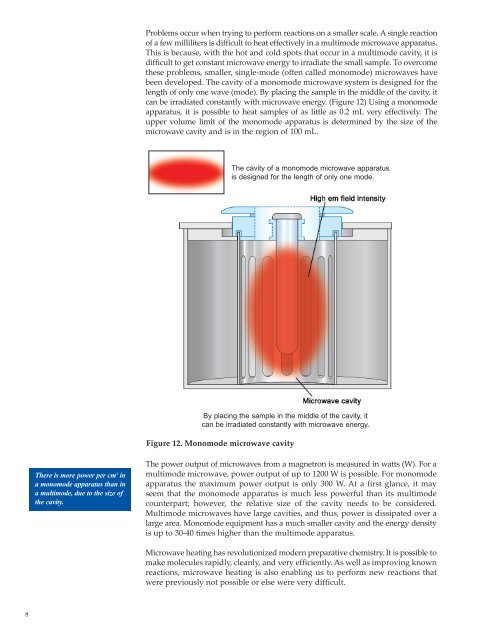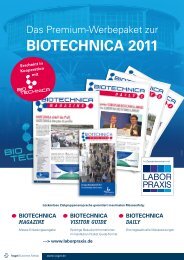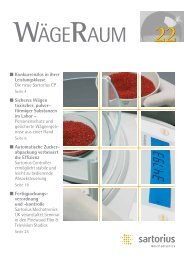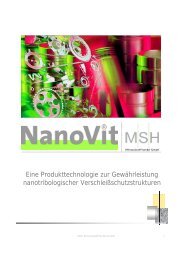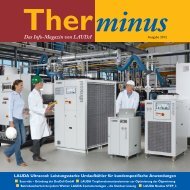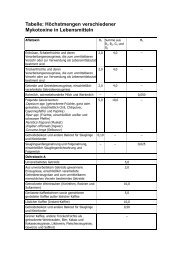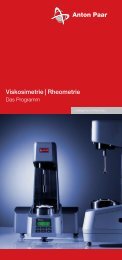Clean, Fast Organic Chemistry - LaborPraxis
Clean, Fast Organic Chemistry - LaborPraxis
Clean, Fast Organic Chemistry - LaborPraxis
Create successful ePaper yourself
Turn your PDF publications into a flip-book with our unique Google optimized e-Paper software.
8<br />
There is more power per cm 3 in<br />
a monomode apparatus than in<br />
a multimode, due to the size of<br />
the cavity.<br />
Problems occur when trying to perform reactions on a smaller scale. A single reaction<br />
of a few milliliters is difficult to heat effectively in a multimode microwave apparatus.<br />
This is because, with the hot and cold spots that occur in a multimode cavity, it is<br />
difficult to get constant microwave energy to irradiate the small sample. To overcome<br />
these problems, smaller, single-mode (often called monomode) microwaves have<br />
been developed. The cavity of a monomode microwave system is designed for the<br />
length of only one wave (mode). By placing the sample in the middle of the cavity, it<br />
can be irradiated constantly with microwave energy. (Figure 12) Using a monomode<br />
apparatus, it is possible to heat samples of as little as 0.2 mL very effectively. The<br />
upper volume limit of the monomode apparatus is determined by the size of the<br />
microwave cavity and is in the region of 100 mL.<br />
The cavity of a monomode microwave apparatus<br />
is designed for the length of only one mode.<br />
By placing the sample in the middle of the cavity, it<br />
can be irradiated constantly with microwave energy.<br />
Figure 12. Monomode microwave cavity<br />
The power output of microwaves from a magnetron is measured in watts (W). For a<br />
multimode microwave, power output of up to 1200 W is possible. For monomode<br />
apparatus the maximum power output is only 300 W. At a first glance, it may<br />
seem that the monomode apparatus is much less powerful than its multimode<br />
counterpart; however, the relative size of the cavity needs to be considered.<br />
Multimode microwaves have large cavities, and thus, power is dissipated over a<br />
large area. Monomode equipment has a much smaller cavity and the energy density<br />
is up to 30-40 times higher than the multimode apparatus.<br />
Microwave heating has revolutionized modern preparative chemistry. It is possible to<br />
make molecules rapidly, cleanly, and very efficiently. As well as improving known<br />
reactions, microwave heating is also enabling us to perform new reactions that<br />
were previously not possible or else were very difficult.


